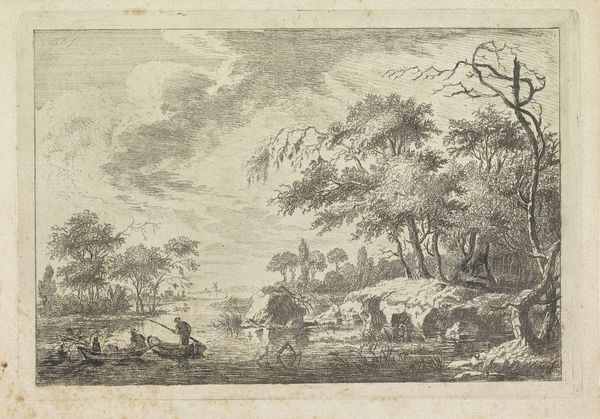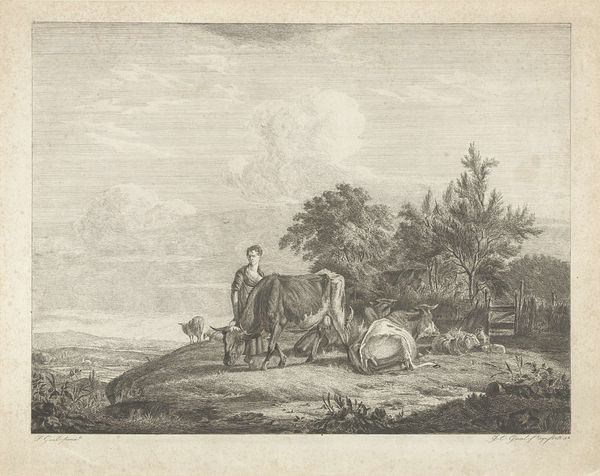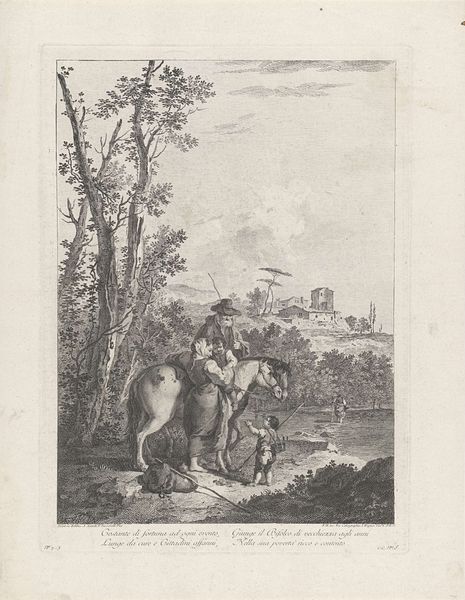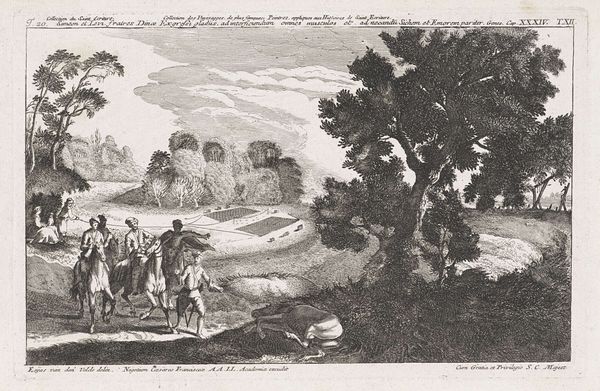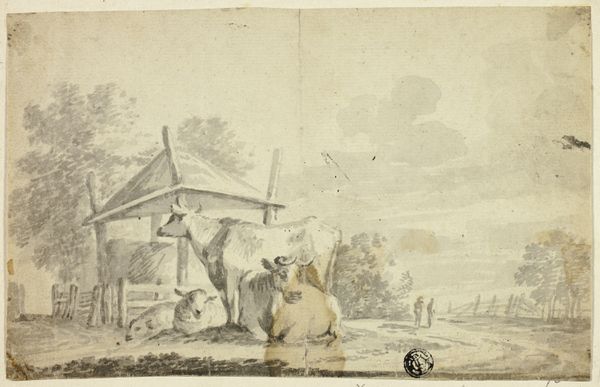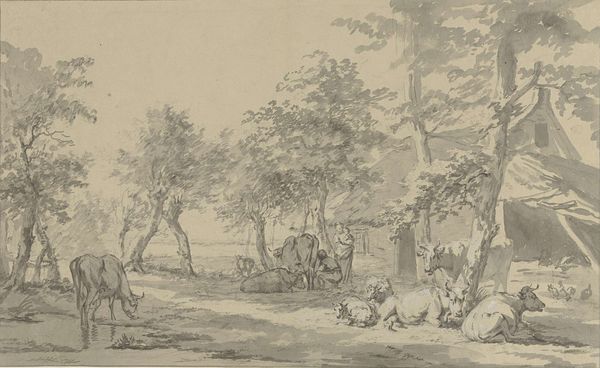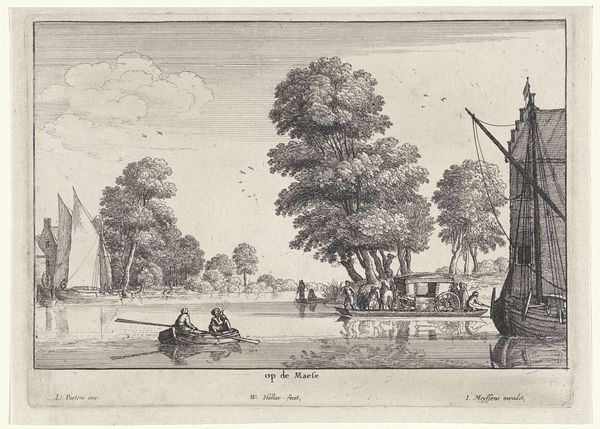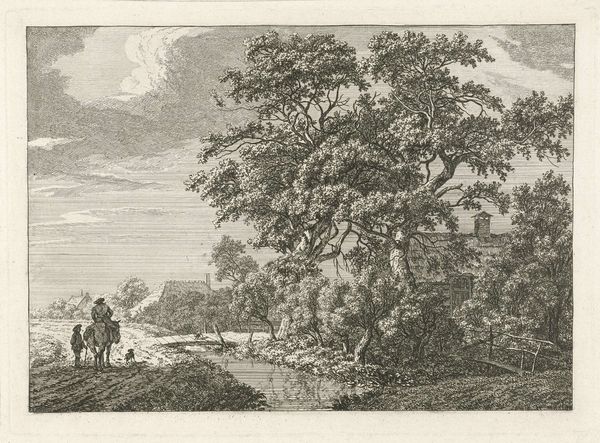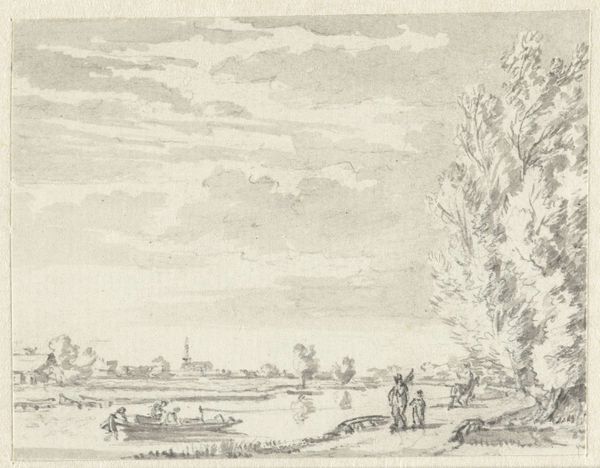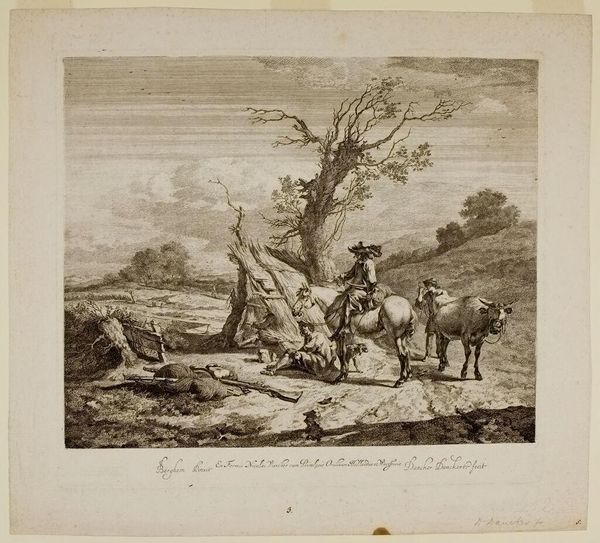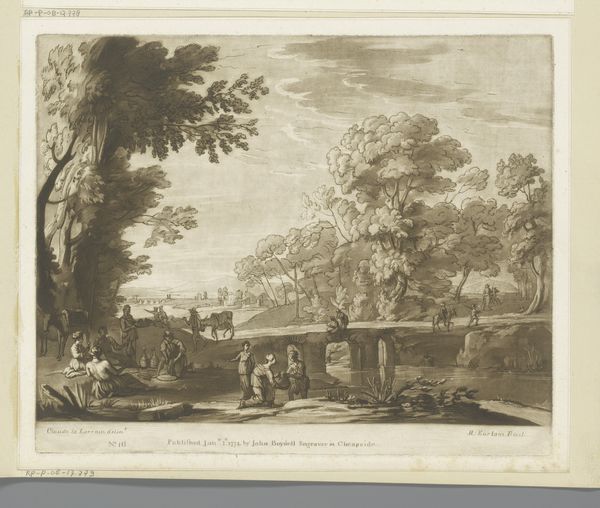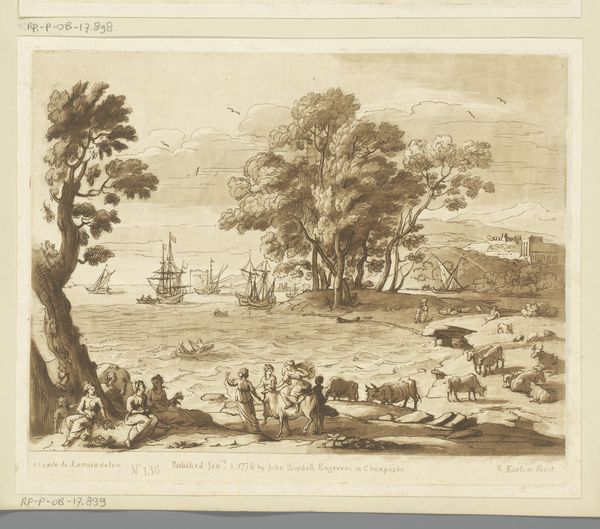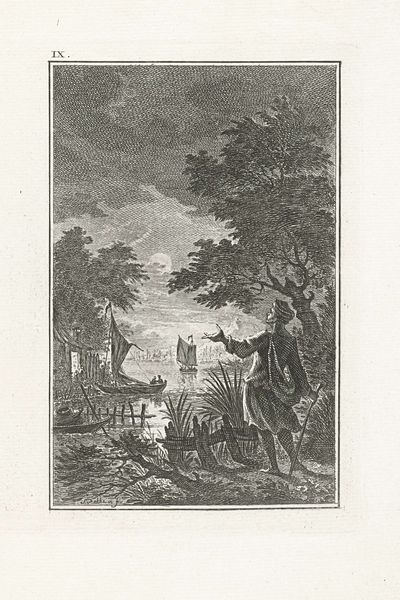
drawing, pencil
#
drawing
#
baroque
#
dutch-golden-age
#
pencil sketch
#
landscape
#
pencil drawing
#
pencil
#
genre-painting
#
watercolor
Dimensions: height 202 mm, width 288 mm
Copyright: Rijks Museum: Open Domain
Curator: This is Jan Asselijn's "Herdsmen by a Campfire at Moonlight," a drawing rendered in pencil around 1645 to 1652. It’s currently held in the Rijksmuseum. Editor: It’s quite striking! The hazy atmosphere immediately creates a feeling of solitude and stillness, even with figures present. The grayscale adds to the solemnity, as if viewing a scene from the past. Curator: Asselijn was known for his Italianate landscapes. He often included genre elements, these everyday scenes that provide insight into the lives of ordinary people during the Dutch Golden Age. The drawing is part of a larger exploration into the aesthetics of landscape at that time. Editor: Seeing this scene, one can’t help but ponder about the societal hierarchies of the era. Who were these herdsmen? How did socio-economic conditions influence their lived experiences? And does the image romanticize a harsh reality, as so much art tends to do? Curator: That’s a fair question. It’s difficult to reconstruct the full context behind the piece but the existence of genre-themed paintings was growing, coinciding with the rise of a prosperous merchant class that acquired them. Editor: I imagine there would have been complex class and cultural assumptions inherent in how these scenes were portrayed, bought and viewed by the burghers. Do we know if the work served as some kind of national symbol? Curator: Though I can’t attest to specific symbols within this work, depictions of the rural countryside were popular, perhaps signifying a connection to land and tradition within the young Dutch Republic. It gave rise to many schools of artists interpreting similar scenes of the countryside in diverse media, subjects and format. Editor: The pencil drawing makes me reflect on the ways in which art institutions collect, exhibit and frame history, whose stories get told and who remains on the margins of the visual narrative. It offers a lens to explore the dynamics of power and representation of a very different era. Curator: It highlights, indeed, that our understanding of these landscapes will be ever in dialogue with historical perspective. Editor: Absolutely, so thank you. This scene leaves me pondering, as ever, about art as a space of complex reflections.
Comments
No comments
Be the first to comment and join the conversation on the ultimate creative platform.

